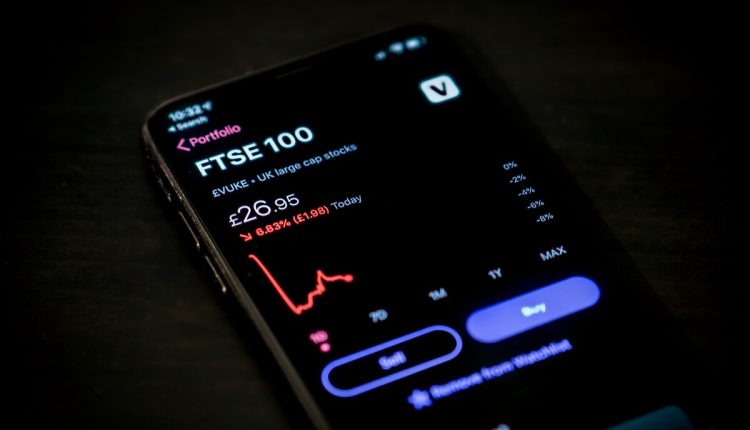Artificial Intelligence Forex Trading
AI forex trading processes large volumes of real-time data in order to help traders make timely decisions; however, this technology also has some inherent limitations. Select the best forex robot.
AI can be unreliable when faced with unexpected events, prone to over-optimization and curve fitting, making its decisions hard to understand.
Real-time data analysis
AI tools can assist traders in developing a better understanding of market trends and their effects on currency prices in forex trading, helping traders interpret forecasts more accurately by analyzing news articles, social media, and other sources of market sentiment analysis. AI can also identify emerging market trends and predict future volatility, enabling traders to make informed trading decisions that maximize profits while aiding international trading companies in planning more efficient currency transactions.
AI technology requires access to high levels of computing power, so traders should carefully evaluate its forecast accuracy, its source, and the data used in creating them, as well as the cybersecurity and privacy practices of companies that provide such data.
AI can improve risk management by automating the setting of stop-loss and take-profit orders based on predefined risk parameters. It also detects any anomalous market movements that might not be easily noticed by human traders, helping traders preserve capital investment.
AI in forex trading can be a beneficial asset that helps traders maximize their profit potential. It can assess and manage risk factors, diversify portfolios, set trading stops automatically, alert them of potentially lucrative opportunities with its pattern recognition abilities, and automatic trading stops automatically.
Predictive modeling
Predictive modeling in artificial intelligence forex trading entails using historical data to identify patterns and trends that predict price movements in the future. This helps traders make more informed trading decisions and identify profitable trading opportunities more efficiently while testing strategies against their goals and styles – something both experienced traders and newcomers to the currency markets will find immensely useful.
Predictive modeling tools offer traders insights into market sentiment, making it easier to comprehend what other traders are thinking about the market. This technology can analyze news articles, social media posts, and other sources to gauge sentiment and decide whether to buy or sell. Investors, in particular, will find this particularly helpful when making decisions about whether to invest.
Predictive modeling in AI forex marketing also benefits traders due to its ability to keep pace with market changes. AI algorithms can automatically execute multiple trades within seconds, giving traders an edge to capitalize on small market developments and monitoring potential risk factors to prevent any impulse decisions that could cause costly errors.
Artificial intelligence in forex trading is revolutionizing the industry, yet several challenges and considerations remain. Traders must understand its limitations—such as interpretability issues and tendencies for overfitting historical data—while also being cognizant of balancing machine learning (ML) algorithms with their market expertise and experience.
Sentiment analysis
Sentiment analysis is a crucial part of CFD trading, offering insights that enable traders to make more profitable trades. However, sentiment analysis trading carries some risks; thus, traders should be aware of these risks and take steps to mitigate them.
Sentiment analysis uses artificial intelligence (AI) and natural language processing (NLP) to provide market analysis. It examines textual data such as news articles or social media posts to identify sentiment-bearing words and phrases before employing supervised learning to train algorithms that recognize specific sentiment patterns.
NLP allows machines to understand context and nuance, making accurate sentiment analysis possible. It can also be used for predictive analytics—specifically trend and sentiment predictions—which is especially useful for risk management. Traders can use this type of forecasting to anticipate negative news sentiment and take proactive measures against any possible losses to their investment capital.
Sentiment analysis can also identify emerging market trends. For example, sudden positive sentiment about a particular stock may signal its impending surge in value – giving traders an early edge when trading it. NLP technology can also detect false signals to increase the accuracy of results and ensure trading decisions are based on reliable information.
Pattern recognition
AI technology is being implemented into more forex trading platforms, helping traders understand market trends more quickly while making better decisions and detecting investment scams more quickly. However, it must be remembered that AI cannot replace human trading strategies; rather it simply assists them.
Trading Platforms allow traders to stay abreast of current developments by processing large volumes of real-time data. Furthermore, they enable traders to identify patterns in price movements that might impact future currency movements – critical information when it comes to making informed decisions about when and why to buy and sell currencies.
This technology also makes it possible to detect patterns that would be difficult for an individual to spot manually, such as reversals and trend shifts, which allows traders to enter and exit trades more effectively and maximize profits.
Pattern Recognition AI (Recognition Artificial Intelligence) is an algorithm that learns and recognizes chart patterns from historical data. Designed as an open-ended system that adapts to users’ styles and risk tolerance levels, its code relies on multilayer perceptron networks and long short-term memory neural networks as machine learning algorithms for processing the input.
AI systems rely on large amounts of high-quality data to function optimally; however, this can present difficulties in the forex market, where data availability may be limited or inconsistent. Furthermore, AI systems may become susceptible to overfitting and curve fitting, which leads to inaccurate predictions and financial losses.


